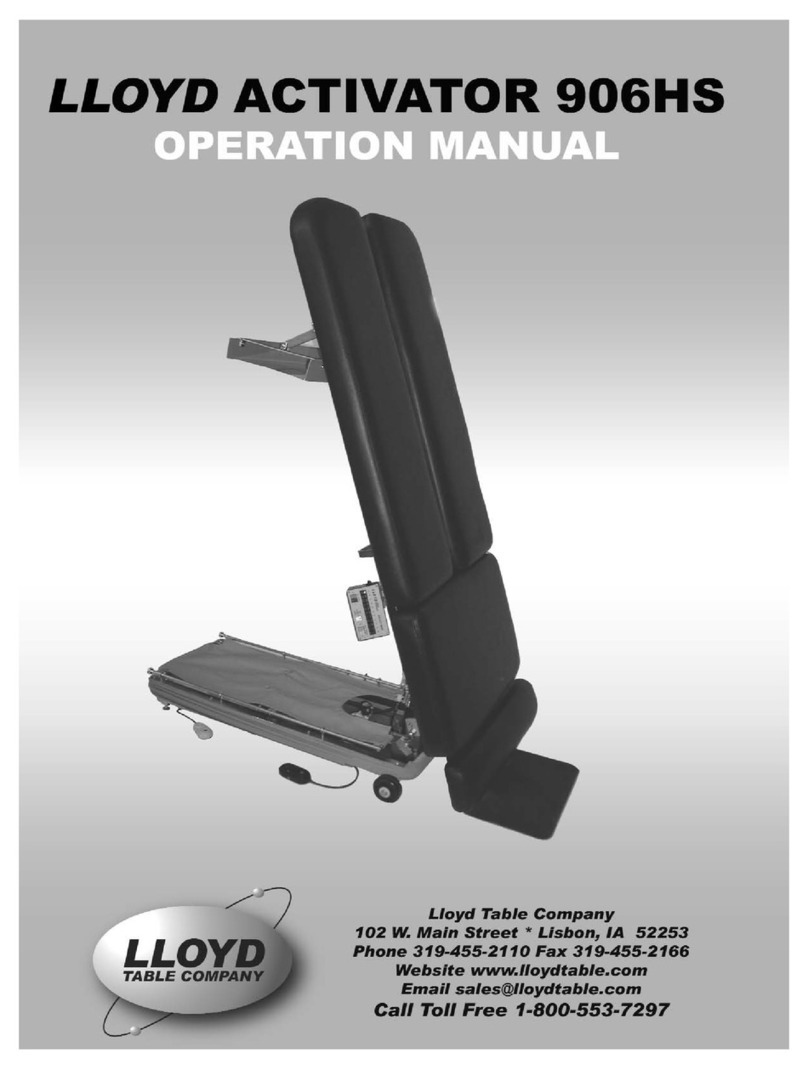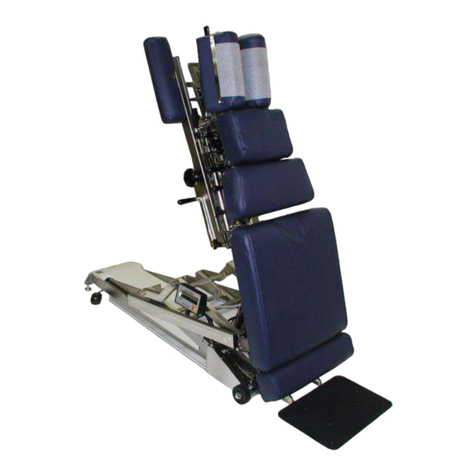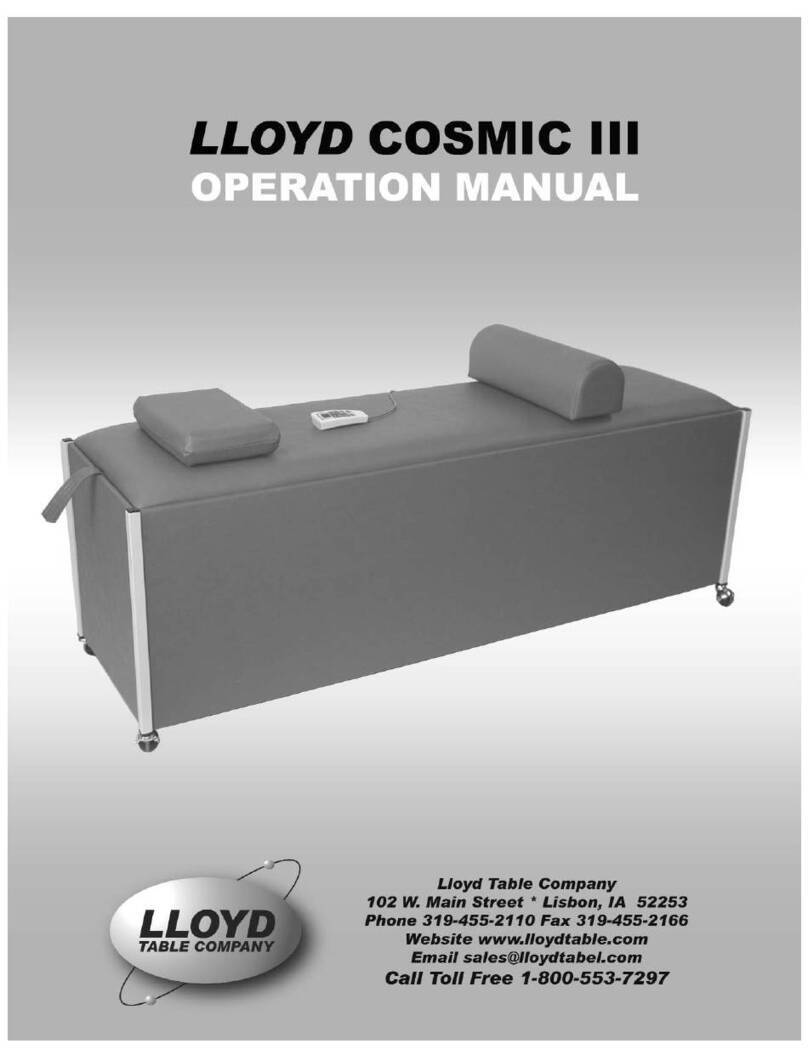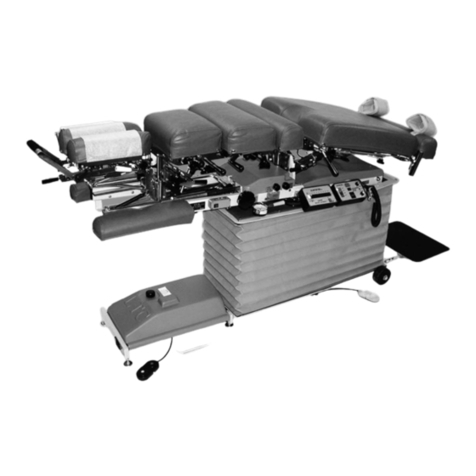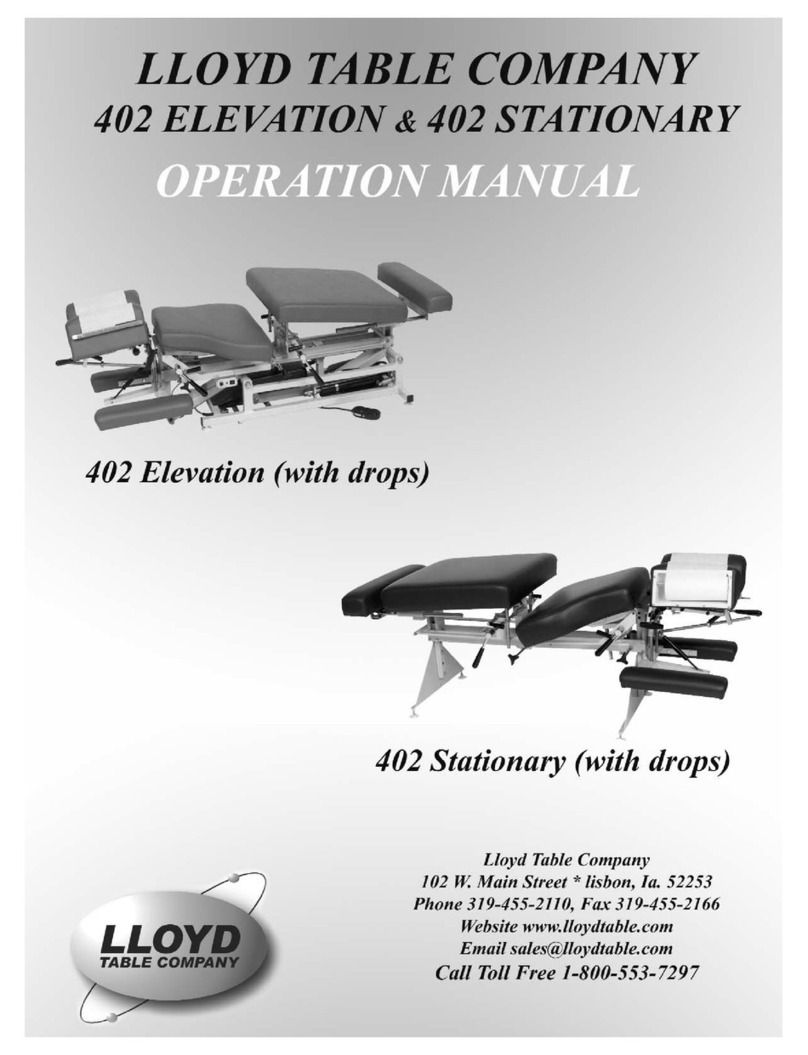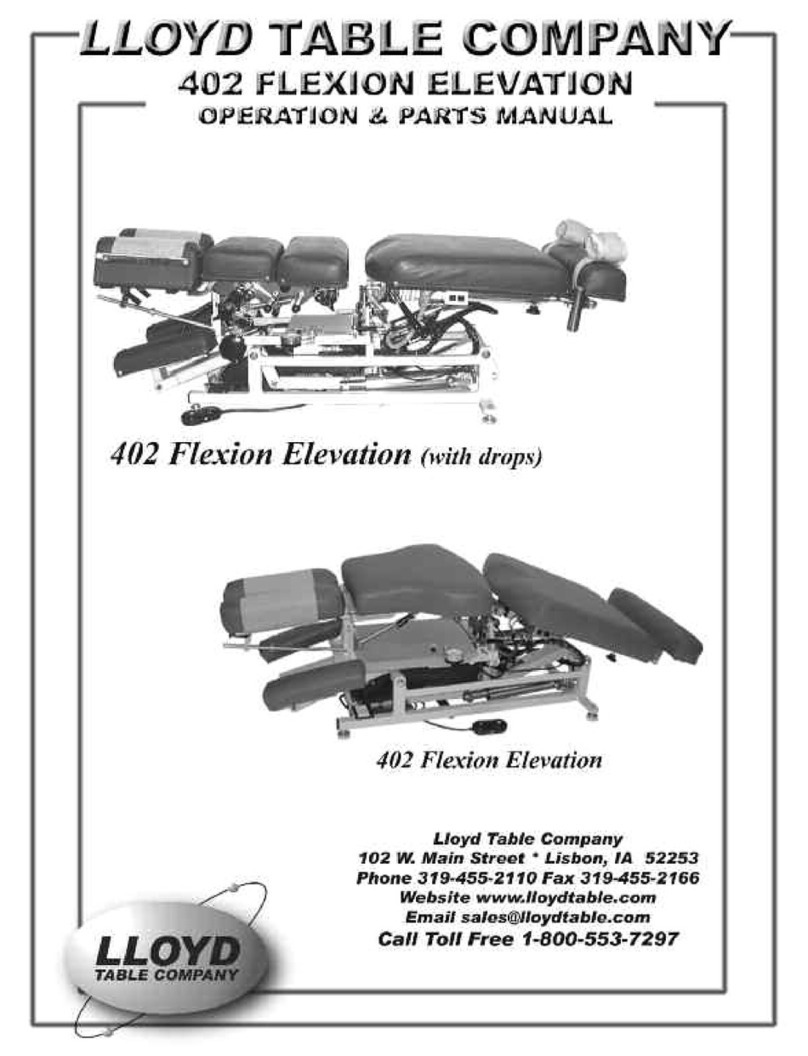CONTENTS
OPERATIONS PAGE
Safety and Maintenance.......................... 1 - 2
Head Rest Cushion................................. 3 - 5
Chest Cushion......................................... 6
Head & Chest Extension / Retraction..... 7
Tilt Safeguard.......................................... 7
Drop Chest............................................ 8-9
Drop Pelvic............................................ 10
Auto Cocking Drops.............................. 11-12
Ankle Rest............................................... 12
Foot Pedal Control / Power Switch......... 13
Height Select Panel................................. 14-15
Error Code Tables ..................................... 56-58
PARTS / ASSEMBLY PAGE
Tilt Frame................................................. 16
Base Frame............................................. 17
Deluxe Head Cushion................................ 18
Deluxe Head Frame.................................. 19
Chest Cushion Assembly........................ 20-21
Deluxe Head I-Frame............................. 22
Pelvic Cushion Assembly ..................... 23
Ankle Cushion........................................ 24
PARTS / ASSEMBLY PAGE
Foot Stand ............................................. 25
Cover / Bellows...................................... 26
Hydraulics............................................... 27
Electrical.................................................. 28-29
Hydraulics Auto Drops........................... 30-31
Straight Drop Head................................. 32-33
Forward Motion Drop Head..................... 34-35
Flexion Head Cushion Assembly............ 36-37
Flexion Head - Shuttle Assembly............ 38-39
Flexion Head - Slide Frame.................... 40-41
Flexion Head Rotation Block................... 42-43
Drop Chest & Lumbar............................. 44-45
Drop Chest Full Cushion......................... 46-47
Rotation Chest Frame.............................. 48-49
Rotation Chest Cushion........................... 50-51
T-Drop Pelvic.......................................... 52-53
Hydraulics Auto Drops........................... 54-55
Table Serial Number
DATE 9-07






